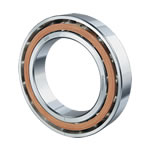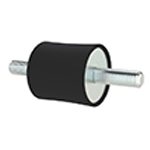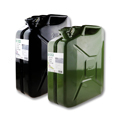Categories
Bearings
Cycling / Biking
Housings & Inserts
Loose Balls & Rollers
Taper Roller Bearings
Belts
Seals
Lubricants
Engineering Parts
Engineers Adhesives
Tools / Bearing Fitting
Hydraulic Parts & Tools
Garden Parts & Accessories
Clearance Bargains
Consumables
Modern Warehouse
AX Section Cogged V Belts - 13x8mm
Loading...
Please wait while we load your selection
';
V or Vee Belt drives consist of a connection between two or more shafts by one or multiple rubber drive belts, these belts are pulled tight or "tensioned" such as to create friction between the sides of the pulleys and the belts, each of the shafts will have a pulley attached and the belt is tensioned between them. As the drive pulley turns the power is transferred to the driven pulley by the belt.
The efficiency longevity and success of the drive is dependent on several factors including the correct design and maintenance of the drive, some of these are:
- The loose side of the drive and tight side tensions being correct.
- Cooling of the drive - guards need to have ventilation.
- The coefficient of friction between the belt material and the pulleys.
- Total angle of contact around the pulleys. - Can be altered by use of a jockey or idler pulley.
- Centrifugal force - as the belt speed increases it is lifted off the pulleys thus loosing traction.
- The correct angle of the V-Pulley being maintained, generally 17 to 19 degrees allowing the belt to be wedged in place.
- Prevention of foreign matter entering the drive. This could be dust, oil grease etc.
- Correct alignment and concentricity of the pulleys.
Advantage of V Belt drives:
- Installation tolerances are not so exact.
- Absorb vibration and shocks.
- Lubrication free.
- If overloaded or jammed the belts will slip.
- Higher torsional shaft loads can be handled by multiple belts.
- Can transmit very high loads and speeds.
- Can be use to step speed up or down by pulley diameter ratio changes.
Disadvantages of V-Belt drives:
- Higher bearing loads on tensioned end of a drive shaft.
- Bearing life may be reduced.
- Rubber has a limited life and can be reduced further if contaminated.
- Smaller diameter pulleys cause stresses to the rubber and fibre make up of belts .
- Dust, Oil and other foreign matter will wear pulleys and reduce belt life, cause slipping and reduce the amount of energy transferred.
- Failure can be sudden, snapped belts will stop the driven side of a drive even though the drive may still be turning.
- Poor ventilation will cause overheating and denaturing of the rubber, subsequent slippage and polishing of the belt may occur.
- Bulky ventilated guarding will have to be installed.






